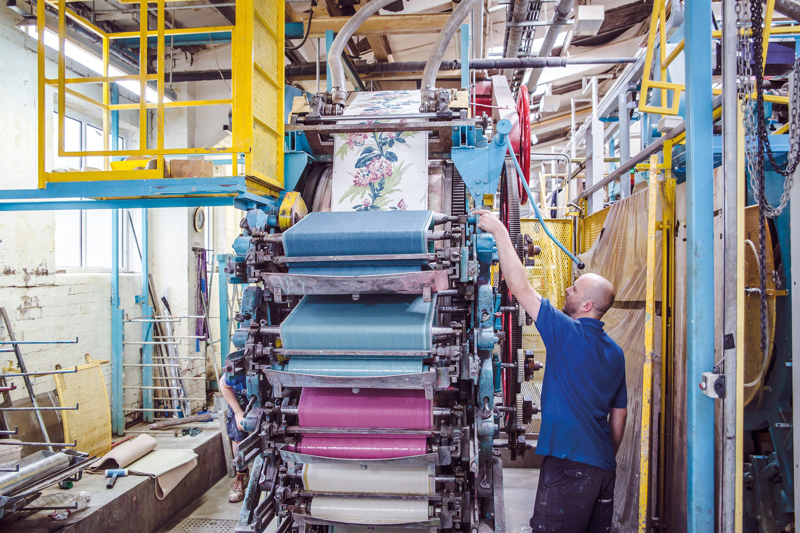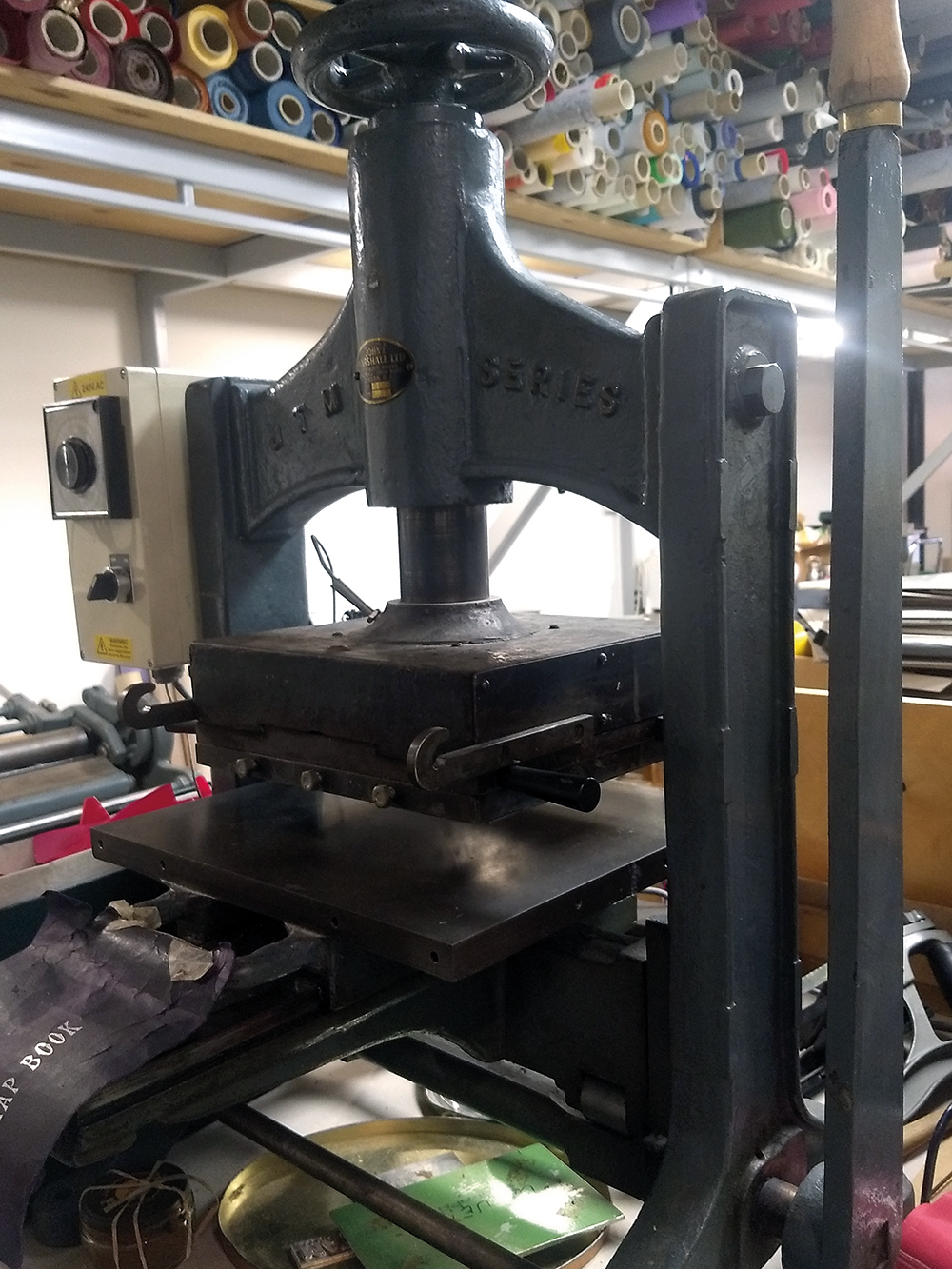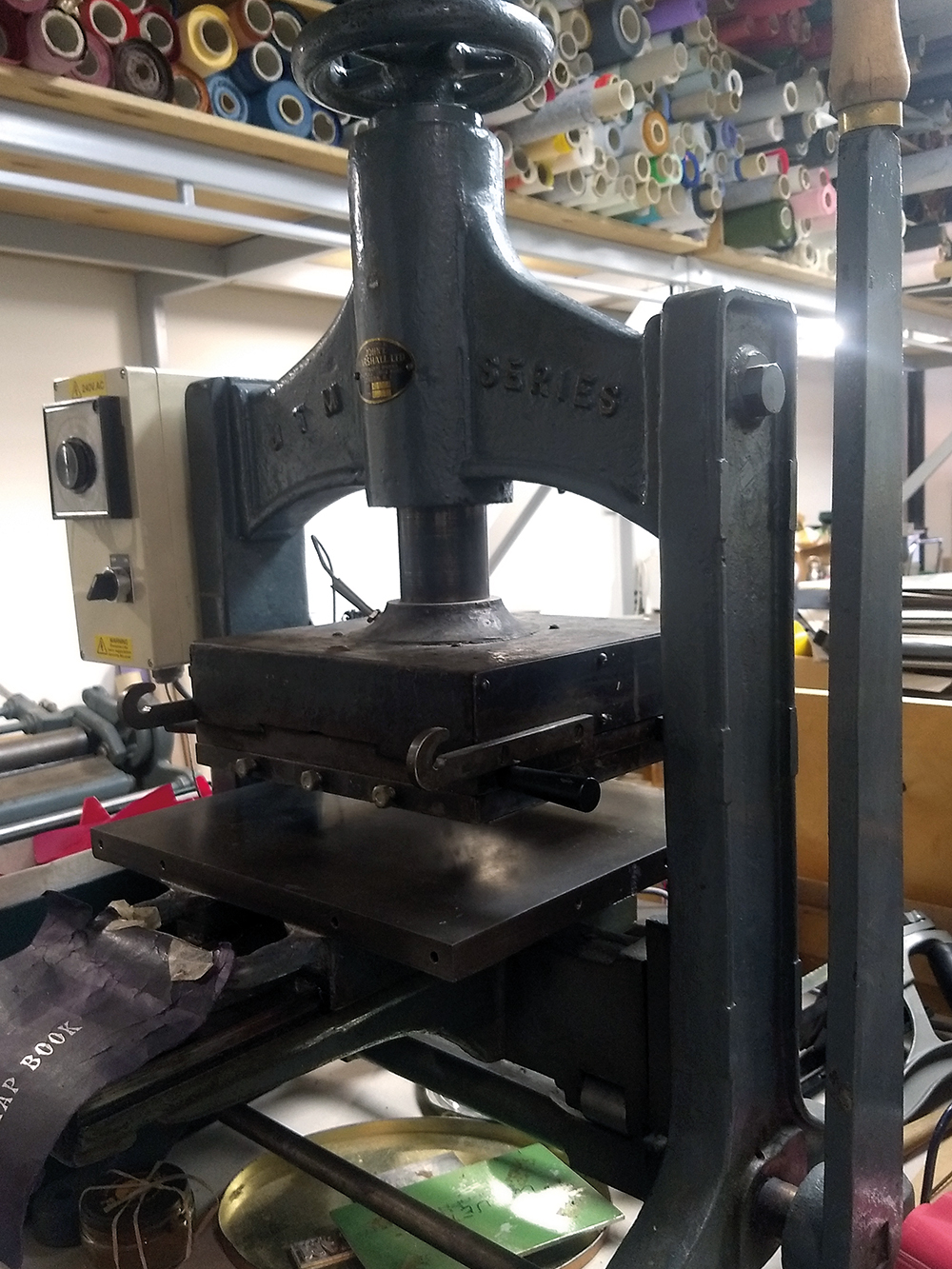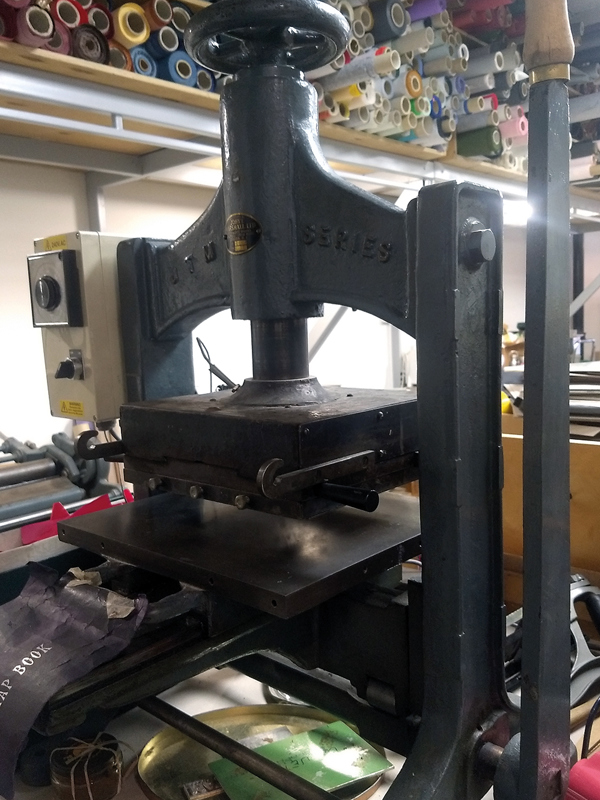Printweek spoke to a number of printers to ask if they used older kit and what their favourite was.
Surface Print
Lancashire-based Surface Print specialises in wallpaper printing. The company, which celebrates its 30th anniversary this year, uses a wide range of printing techniques including flexo and digital, but it’s most intriguing bits of kit are its surface printing machines, which date back to the early-1900s. There aren’t many of these cast iron machines still in operation globally today yet Surface Print uses four on a regular basis.
Each machine has up to 12 print stations arranged around the outer circumference and each print station has a hard rubber roller engraved with an element of the pattern and a trough of ink.


To achieve a rich, saturated colour, the ink is transferred via a calico blanket to the roller and then to the substrate. As the print mark is still wet when the next colour is applied, wet ink falls on wet ink, creating a beautiful hand painted look.
According to Surface Print managing director James Watson the surface print machines are the company’s prized possession. “It’s fascinating to watch these machines, that are over a century old, printing wall coverings,” says Watson. “Designers and customers are always astounded by the beautiful hand-painted effect achieved. As the fourth generation of the family to be in the wallpaper industry, we’re so proud to be following in the footsteps of our ancestors and keeping this unique printing method alive. We have a very skilled production team with many years of experience. All the colour mixing is done by hand, no computer kitchens involved, just true craftsmanship creating works of art to wallpaper homes all over the world.”
Healeys Print Group
When asked what’s the oldest piece of kit the company owns Healeys’ managing director Philip Dodd retorts: “A colleague has suggested that I am the oldest bit of kit in the place – harsh, but a fair assessment – as we have invested so regularly in new equipment.”
He adds that as a result of this ongoing investment programme the only thing that fits the ‘old’ descriptor is a Heidelberg Cylinder – quite possibly THE stalwart item of ‘old’ kit across the industry – which was refurbished by Senior Graphics a number of years ago so that it could be used as a cutting and creasing machine.
“I am sure it has paid for itself many times over,” says Dodd. “It has also provided a talking point to visitors to the factory – a 1960s machines in amongst all the latest kit. I really can’t see us changing this machine in the near future, it does a great job.”
Apple Binding
The company was founded in an old apple store in the middle of a field – hence the name – back in the early 1990s by Jon and Kate Luke. Apple Binding, which is based in Essex, has an impressive armoury of old machinery, including three James Burn International EP 700 manual heavy duty punches for wire binding, plastic spiral and tab cutting, that date back to the period 1984-89.
“I feel they are the best hand punches ever made and superior to their predecessor the EPX 700 of which we have one,” says Apple Binding managing director Jon Luke. “The good thing about the EPX 700, which is from the 1990s, is they use the tools for the James Burn Auto punches EX 610 and EX 380.”
Luke says the machines don’t require much maintenance beyond a bit of oil every now and then. Plus “the circuit boards need re-soldering up every year or two”. The company punches a wide range of printed collateral on the machines including wall calendars, desk calendars, tent cards, half Canadian and full Canadian covers, and Luke says Apple Binding can “ping an enormous amount of paper” if all of the machines are working at once.
Kenads Printers
The Worthing-based company is the proud custodian of a piece of print history in the form of a Thomson Platen, which was built in the early 1940s and is still used regularly by Kenads for die-cutting and creasing.
Ian Strudwick, managing director of the company, says he acquired the platen from an old printer who had owned it for many years. “When we first installed the machine we had to undertake a fair amount of work to get it running again,” he explains. “We managed to find a few spare parts on eBay and this allowed us to use the machine for cutting and creasing.”
He adds that the Thomson will run all day “without missing a beat” at a speed of just over 3,000 sheets per hour in perfect register. “Our platen is a lovely machine to run and one day, if we can source the parts needed, we would love to be able to ink it up,” says Strudwick. “The staff at Kenads love running the machine as the operation is so old school. No electronics to go wrong or sensors to trip out. All you really need is an oil can!”
BCQ Group
BCQ chairman Richard Knowles says he could easily nominate the company’s 1964 Heidelberg SBG Cylinder press – “a faithful and productive favourite that we have had in various iterations for 30 years or so” – or its 1980s Heidelberg GTP foiling machine.
“Both are still used every day (prior to lockdown at least) despite having been long replaced by more modern, productive, but ultimately less flexible and satisfying equivalents,” says Knowles.
However, his says his favourite machine is older – 200 years older to be exact. Knowles plumps for the company’s circa 1820 Stanhope press.
“Designed by gentleman scientist, Lord Charles Stanhope in circa 1804, this was the first iron printing press and helped revolutionise the art of letterpress printing at that time,” explains Knowles. “From the days of Gutenberg in the 15th century, presses were constructed largely of wood and were unable to take the repeated and immense strains required of them by the pressman. The Stanhope offered the enormous advantage of being able to print the equivalent of two pages to view in one pull that would otherwise have taken two, thus increasing productivity.”
He adds that the quality and consistency that could be achieved on the Stanhope were “remarkable” and it soon became a favourite among commercial printers of the era.
“It is believed that our Stanhope No 380 was one of a battery of Stanhopes that helped print The Times newspaper and at some stage it is also thought to have been in production at Oxford University,” says Knowles. “No 380 has long been retired and languishes with its peer group contemporaries – Columbian and Albion – in our reception area, all of which are delightfully analogue and simplistic. No power, mother-board or internet connection to worry about. No emissions or pollution either. Just the skill and muscle power of the master printer.”
Mount Street Printers
The Mayfair-based company mixes traditional craftsmanship with the latest technology to produce luxury personalised stationery. It uses an array of different equipment, including an old Heidelberg ‘windmill’ platen press. “Every printer has got a windmill,” says Alex Cain, director at Mount Street Printers. “It’s a super versatile machine.”
The machine was devised to be used for letterpress printing, but as letterpress fell by the wayside and was overtaken by litho many of these machines were just parked in the corner of workshops and factories, according to Cain.
However, printers were loathe to get rid of them due to their flexibility. “You can use them for cutting and creasing,” he explains. “You can also use them for foiling”.
Cain, who owns a number of Heidelberg platens, bought one of his first from a printer in the West Country, but since then he’s sourced them from Chris Bottomley who runs a company called Letterpress Services.
“Over the years we’ve bought new ones from Chris that he’s fully reconditioned,” says Cain. “He has updated them, put electrics on them and turned them into stunning machines.”
Wyvern Bindery
Bespoke bookbinding company Wyvern was founded in London 30 years ago by bookbinders Mark Winstanley, Rosie Grey and Hannah Moore. The company uses a wide range of different equipment, but the one favoured by bindery worker Julian Pendlebury, is an old John Marshall blocking press – the JTM Series – which is typically used for gold foiling.





It’s thought the machine pre-dates the 1950s, but despite its age it is still used on a daily basis, according to Pendlebury.
“I love it,” he says. “For something that looks like a big heavy, clunky thing you can get incredibly precise with it. People initially don’t like working with it because you’re kind of working blind; you can’t see what you’re doing. But if you set it up properly and you’re consistent with what you do you can be incredibly accurate.”
Orchard Press
Jason Grubb, director of Swindon-based Orchard Press, says he doesn’t know how old his favourite piece of printing kit is. “I’ve been here for 15 years and I bought the company six years ago, but I don’t have any paperwork on the Heidelberg Cylinder that we use all the time because it’s been written off on the asset sheet,” explains Grubb.
He suspects the machine, which he gets serviced once a year, is around 40 years old, but its age hasn’t diminished its productivity, although like many others nowadays it isn’t used how it was originally intended by the manufacturer.
“We use it to do all of our die-cutting,” says Grubb. “It will cut our door hangers, bin tags, folders. We even do some condom boxes on there and it works a treat. It’s an invaluable bit of kit for us and when someone wants something punched out to a specific shape that’s where it goes.”











